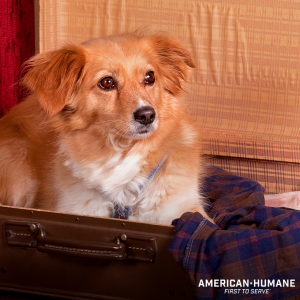
The Facts
- Canine infectious respiratory disease complex (CIRDC), more familiarly known as “kennel cough,” is a highly contagious illness affecting the respiratory tract in dogs.
- All breeds and ages are susceptible but as the name “kennel cough” suggests, dogs at particular risk are those exposed to settings where multiple dogs are typically gathered or housed, such as kennels, shelters, and daycare facilities.
- Several different types of bacteria and viruses can contribute to CIRDC, and dogs can be infected by two or more of these organisms at the same time. A few of the more commonly involved organisms include Bordetella bronchiseptica (a bacterium) as well as canine parainfluenza virus and canine adenovirus type 2.
- Because the virus is airborne, normal cleaning and disinfecting of kennel surfaces cannot eliminate it.
Symptoms
- The classic sign of CIRDC is a frequent, honking cough that comes on suddenly. This cough has also been described as gagging or retching, and it can involve froth that looks like vomit.
- Coughing generally worsens with activity or exercise, which can irritate the airways.
- Not all dogs with CIRDC will have a cough. Other common signs include sneezing and a runny nose or eyes.
- In most cases of CIRDC, the illness is mild, and dogs fully recover within 7 to 10 days.
- However, depending on the infecting organism(s) and the dog’s ability to fight them, some dogs may develop more severe signs like lethargy, decreased appetite, fever, productive cough, and rapid or labored breathing, which can signal that bacteria have infected the lungs (bacterial pneumonia) and immediate veterinary attention is needed.
How is CIRDC spread?
- Most dogs with CIRDC are contagious before they start showing signs. Because of this, the disease can be difficult to control. It can spread rapidly, leading to outbreaks—particularly in multiple-dog settings.
- Some CIRDC-associated organisms are also quite hardy, able to survive in the environment for weeks, making controlling spread of infection even more challenging.
- Dogs can catch CIRDC through close or direct contact (e.g., licking or nuzzling) with infected dogs, breathing in cough or sneeze droplets from infected dogs, and exposure to droplet-contaminated items such as toys, bedding, people’s hands, or water bowls.
- The risk of infection is especially high when dogs are in close contact with other infected dogs for long periods of time.
- If you suspect your dog has CIRDC, it is important to stop the disease from spreading by keeping the dog away from other dogs until fully recovered.
Solutions
- There is no special drug for dogs with CIRDC. The treatment approach depends on how sick the dog is.
- Most mildly affected dogs will quickly make a full recovery with basic supportive care aimed at avoiding situations that promote coughing and irritate airways. This means encouraging the dog to rest and avoiding excitement and neck leashes.
- Dogs with more severe illness may benefit from nonsteroidal anti-inflammatory medications (to reduce fever and inflammation) and fluids (to treat dehydration).
- Antibiotics are not usually necessary or recommended unless there are signs of bacterial pneumonia, including illness that lasts more than 10 days.
- In rare instances, dogs with severe disease may also need intensive supportive care, such as oxygen supplementation.
- Keep dogs in a relatively warm environment and make sure they are rested to help prevent the development of pneumonia.
- Prevent the spread of this disease by keeping your dog away from other dogs.
Important to know
Not every cough is “kennel cough.” Some dogs bark almost continuously while sheltered, which can lead to a sore throat or many other upper-respiratory diseases.
Dogs in which canine distemper virus is one of the infecting organisms may also have gastrointestinal signs (e.g., vomiting or diarrhea), hardened footpads, and, as the disease progresses, neurologic signs (e.g., head tilt or circling behavior). These dogs, as well as puppies and older dogs with other health problems, are at greater risk of severe disease, and even death.
If your dog has a fever, is less active than normal, has a decreased appetite, has discharge from the eyes or nose or has difficulty breathing, a more serious problem may be present.

